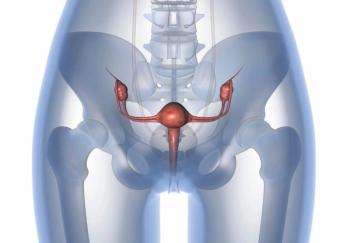
Tumor Vasculature Remains Stable Through Progression of Ovarian Cancer
The intratumoral vasculature of high-grade serous ovarian cancer does not appear to undergo significant changes during disease progression.
The intratumoral vasculature of high-grade serous ovarian cancer does not appear to undergo significant changes during disease progression, according to a new study. The measures of angiogenesis studied were not associated with overall survival.
“After decades of paralysis in primary ovarian cancer first-line chemotherapy treatment, incorporation of bevacizumab in the upfront regimen for advanced newly diagnosed disease has changed the ‘standard of care paradigm’ of advanced primary ovarian cancer,” wrote study authors led by Ilary Ruscito, MD, of Sapienza University of Rome in Italy. “Thus, understanding changes in the vasculature or identification of prognostic biomarkers of response to vasculature targeting is needed.” There are no current biomarkers to help tailor bevacizumab treatment in ovarian cancer patients.
The new study examined tumor microvessel density (MVD) and VEGF-A expression in a cohort of 222 paired samples of primary and recurrent ovarian cancer. MVD was measured using immunohistochemistry measurement of CD31, an angiogenesis-associated biomarker. The results were
A total of 84 of the 111 primary ovarian cancer samples (75.7%) had high intratumoral MVD expression, and 23 samples (20.7%) had VEGF-A expression. In the 111 recurrent samples, 57 were MVDhigh (51.4%) and 23 were VEGF-positive (20.7%).
There were 22 primary samples that had both high MVD expression and expressed VEGF-A (19.8%); for recurrent samples, this was seen in 9 patients (8.1%; P = .02).
A pairwise analysis showed there was no significant change from primary to recurrent ovarian cancer with regard to MVD (P = .935) or VEGF-A expression (P = .121).
Samples that were MVDhigh were associated with higher CD3-positive (P = .029) and CD8-positive (P = .013) intratumoral effector tumor-infiltrating lymphocytes. In contrast, VEGF-positive samples were frequently seen in BRCA-mutated tumors (P = .019).
Primary ovarian cancers that were MVDhigh or VEGF-positive were found to be significantly associated with improved overall survival, but this association did not remain upon a multivariable analysis.
“Future study on a larger population with known BRCA status, who has been subjected to bevacizumab-based first-line chemotherapy, is warranted to clarify the role of MVD and VEGF in predicting bevacizumab response in both BRCA wild-type and BRCA-mutated high-grade serous ovarian cancer patients,” the authors concluded.
Newsletter
Stay up to date on recent advances in the multidisciplinary approach to cancer.



















































































